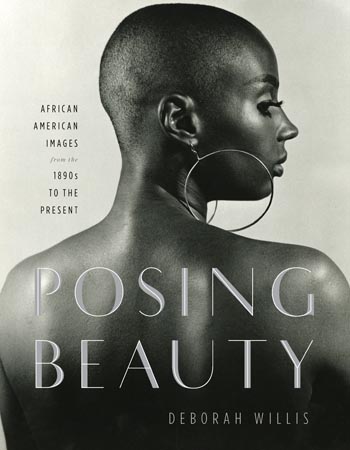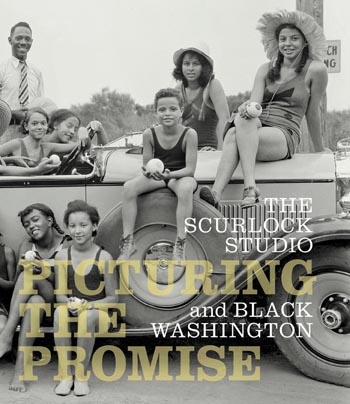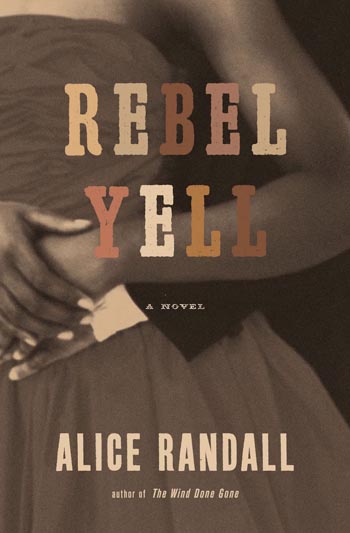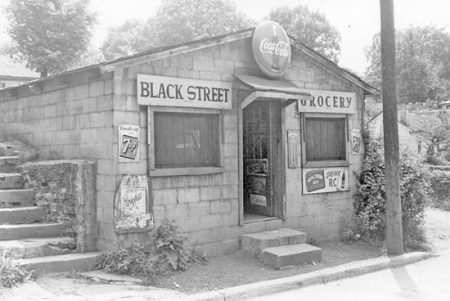Book Bag: A Thousand Words, a Hundred Years: Fresh Views of a Century of Black Life in America
 Posing Beauty African American Images: From the 1890s to the Present
Posing Beauty African American Images: From the 1890s to the Present
By Deborah Willis
Historically, images of African Americans, especially beautiful ones, have been unseen if not discarded by the mainstream culture.
Deborah Willis, author, photographer, and chair of the Photography and Imaging Department at the Tisch School of the Arts, has assembled hundreds of images that showcase not only the usual iconic images of entertainers like Aretha Franklin and Jimmy Hendrix but lesser-known images of entertainment, sports, and political stars such as Serena Williams, Rosa Parks, Angela Davis, Judith Jamison, Sean Combs, and the Obamas.
We also see rare images of Marian Anderson (a portrait taken in
Vienna) and Gordon Parks, both of whom had singular impacts on the
national consciousness via voice and photographs respectively. Parks is
represented here both as photographer and subject.
But many of the very best photographs depict more ordinary
people. One memorable image depicts a man giving a piano lesson to a
young girl, another shows a gorgeous woman with an apparently flawless
complexion, her heavy hair piled in an elaborate chignon. Both were for
the 1900 Paris Exhibition.
Covering a great range of styles and photographers, from Richard
Avedon to Henri Cartier-Bresson to Jeanne Moutassamy-Ashe, Posing
Beauty provides a powerful counterpoint not only to invisibility but to
ugly and stereotypical images that have dominated America’s history.
With the presidency of Barack Obama, which Ms. Willis has extensively
photographed, she has found perfect moment to showcase for us what for
her is the work of a lifetime.
245 pages, W.W. Norton, $49.95
 Picturing the Promise: the Scurlock Studio and Black Washington
Picturing the Promise: the Scurlock Studio and Black Washington
Edited by Paul Gardullo, Michelle Delaney, Jacquelyn D. Serwer, Lonnie G. Bunch III
Beginning in the early 20th century, Addison Scurlock was the
go-to photographer for black society in the nation’s capital. Here, in
a compelling slice of his oeuvre, we see pioneers like Charles Drew,
the artist Louise Mailon Jones, and opera singer Lillian Evans Tibbs,
who performed under the name Madame Evanti. Many of these uniquely
accomplished Americans never became household names, often being forced
to go abroad simply to get work.
The impossibility of listing all the major names here from
virtually every walk of life points up the significance of this great
work in terms of chronicling the contributions of African Americans to
the world – who in too many cases never received their due. Lengthy and
fascinating texts and quotations look at topics such as the history of
Howard University and the powerful resistance of African Americans to
segregation and racism in the nation’s capital prior to the
civil-rights movement. For blacks, a portrait by Spurlock was a proud
indication and celebration of success.
Spurlock, and later his sons Robert and George, also focused the
lens on the profound poverty in Washington, D.C. In one image, young
children frolic in a garbage-strewn alley with the Capitol Rotunda in
the background. Still, the bulk of the book illuminates a people who
refused to be defined on any terms but their own. Smithsonian Books,
224 pages, $35
 Rebel Yell
Rebel Yell
By Alice Randall
Anyone aware of the many contradictions that embody black life
in these United States will find in Ms. Randall’s latest work a
compelling and insightful read. As shown by her previous work, notably
Pushkin and the Queen of Spades, she has the knack for illuminating the
“place” of African Americans in the world and how that is both
propelled and hindered by the past.
Clementine Hope Jones, a worldly and wealthy Harvard graduate,
tells the story of her first husband, the suave, brilliant and
beautiful Abel Jones Jr., who while achieving wealth and international
recognition as a diplomat in locales from Manila to Martinique remains
haunted by the terror of segregation with which he grew up. His father,
a prominent black lawyer, has also been irrevocably scarred by the
terror and violence of the nation’s segregated past. A scene in which a
cross is burned on the lawn interrupting Abel’s 13th-birthday party
could well become a classic of American literature.
Ms. Randall, as she has before, tackles uncomfortable questions
about race, gender, and sexuality in a way that is as uncommon as it is
grittily real. She also explores unflinchingly the issue of child abuse
in the black family, an urgent topic that few contemporary writers have
even attempted to tackle. Bloomsbury, 368 pages, $25








